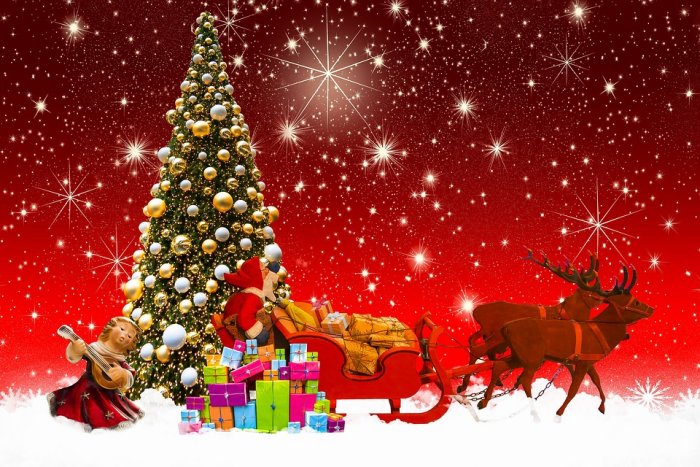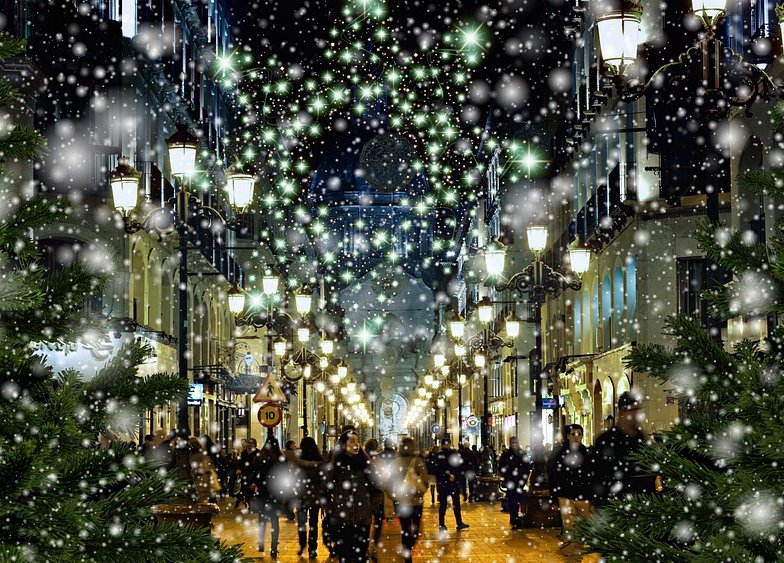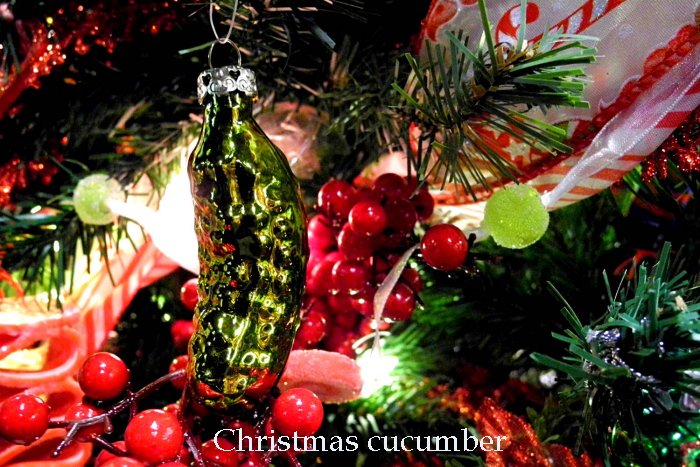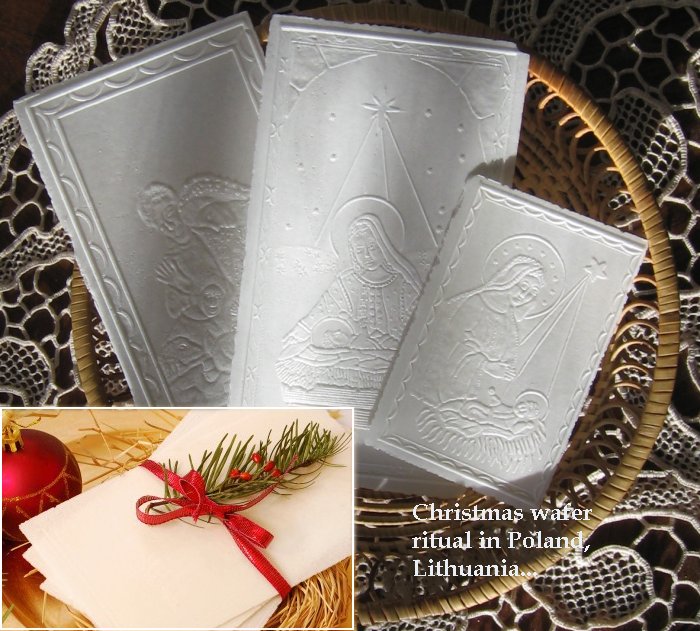Christmas – One Of Most Celebrated Holidays In Christian Calendar
A. Sutherland - AncientPages.com - Christmas is one of the greatest celebrations in the Christian calendar. We dress Christmas tree, eat and surprise each other with gifts. For many of us it is a very special time since we celebrate the birth of Jesus Christ.
During this period most towns, villages, and large cities are decorated with Christmas lights.
Santa Claus And His White Beard
Santa Claus comes to children in most European countries. According to folklore, he is an older man with a white beard and usually a big belly. Known under many names such as Saint Nicholas, Kris Kringle, Father Christmas, or Santa, he has a distinctive red outfit and according to different legends, he distributes gifts during Christmas.
Santa Claus reaches out to children around the world because he travels in the magical sledge pulled by flying reindeers. It is his main form of transportation, which helps him to reach many children around the world. But was Santa a real man?
Christmas Time Around The World
The oldest references to Santa Claus, originate from the historical Saint Nicholas of Myra (70 – 343 AD), an early Christian bishop of the ancient Greek city of Myra (Lycia) in Asia Minor (modern-day Demre, Turkey) during the time of the Roman Empire. The good-hearted St. Nicholaus was famous for his habit of secret gift-giving and helping people in need.
In UK, Santa Claus leaves gifts for children, in stockings, usually hung up by the fire or by the children's beds on Christmas Eve
According to tradition, in return, Santa gets sometimes a glass of alcohol and carrots for the reindeers.
Santa is welcomed by children in countries like Belgium, Germany, Poland, France, Portugal and many more, but in Ukraine, for instance, children get their gifts from either Svyatyy Mykolay or Grandfather Frost who also visits the Russian children.
Since a majority of Ukrainians are Eastern Orthodox, most of the country celebrates Christmas Day on January 7 in accordance with the Orthodox religious calendar.
In Norway, the gifts are sometimes brought by 'Julenissen' (Norwegian Santa Claus) or by the small gnomes called 'Nisse'. In Spain, there is somewhat different tradition. Children get some presents on Christmas Day, but most of them are opened at Epiphany. Children believe that the Kings bring presents to them at Epiphany, the Twelfth Night of Christmas.
They write letters to the Kings asking for toys and presents. And on Epiphany Eve (January 5th) they leave shoes on windowsills or balconies or under the Christmas Tree to be filled with presents. Gifts are often left by children for the Kings, a glass of cognac for each King, a satsuma fruit and some walnuts. Sometimes a bucket of water is left for the camels that bring the Kings. It happens that for the naughty children, the Kings leave only pieces of coal made out of sugar.
La Befana, a good broomstick riding witch, is In charge of gifts, in Italy, where children eagerly count the days to the coming of her on Epiphany, the Twelfth Night of Christmas. La Befana has been an Italian Christmas tradition at least since the eighth century is celebrated every year on January 6.
Christmas Tree And Cucumber
History of Christmas trees dates back to 18th-century Germany, later Christmas tree also appears in other European countries.
According to the German tradition, Christmas tree in are often decorated with … cucumbers, hidden in the branches of Christmas tree, and other cucumber-like Christmas decorations. This decoration has a special meaning; a child, who first finds it, gets an additional gift and will have good luck for the following year.
Real red apples were once used to decorate Christmas trees in France, but one year, there was very bad harvest and people decided to use glass decoration instead. Pretty spiders and their web are a traditional and original decoration on the Ukrainian tree.
According to legend, there was a poor family who couldn’t afford to decorate their Christmas tree. A Christmas spider decorated the tree with spider webs that mysteriously changed to gold and silver on Christmas morning and these people were never poor again, and so this tradition continues.
One beautiful tradition comes from the US, were people still until today decorate their indoor trees adorn with strings of popcorn draped across the tree’s branches, and outdoor Christmas trees are decorated with food for birds and other wildlife.
Meals On Christmas Table Vary Much
In Belgium, France, Brazil, in the Canadian provinces of Quebec, Ontario and other French-speaking regions, is a long dinner - a réveillon, held on the evenings preceding Christmas Day and New Year's Day. It includes lobster, oysters, escargots or foie gras (made of the liver of a duck or goose). One traditional dish is turkey with chestnuts and for dessert, a chocolate sponge cake log called a bûche de Noël is eaten.
In Poland, on the traditional Christmas Eve dinner table, you will find 12 dishes that include red borsch with dumplings with cabbage and mushrooms, a traditional vegetable salad and fish, etc. They symbolize the number of months in the year.
Before, partaking of the Christmas Eve meal, the family gathers around the table, the eldest member holds a large wafer and breaks off a piece to begin the ritual (ritual, celebrated in Poland, Lithuania and in some parts of Slovakia).
See also:
Yule Goat Is A Scandinavian Christmas Tradition Based On Norse Legends And Worship Of God Thor
Ancient Tradition And True Meaning Of Candy Canes
The remaining wafer is passed on to another member while a prayer for loved ones is said. This continues until everyone at the table has a piece of the wafer.
The French first go to mass in the Church, and then sit for the common dinner called Le Réveillon, a long dinner, and possibly party, held on the evenings preceding Christmas Day and New Year's Day. The Danish eat roast pork with crackling, turkey, or goose stuffed with dried plums and apples and served with potatoes, red cabbage.
Their dessert is Risalamande (rice pudding served with cherry- or strawberry sauce) often with a whole almond hidden inside. The lucky finder of the almond is entitled to an extra present, the almond gift.
A Yule log is a traditional dessert served near Christmas, especially in Belgium, France, Switzerland, Quebec, Lebanon and several former French colonies, as well as the United Kingdom. Made of sponge cake to resemble a miniature actual Yule log, it is a form of sweet roulade.
These are just some of the customs and dishes traditionally eaten at Christmas. However, as the proverb says: "Every country has its customs”. Therefore, Christmas tradition varies by country, its culture and tradition.
Written by – A. Sutherland - AncientPages.com Senior Staff Writer
Copyright © AncientPages.com All rights reserved. This material may not be published, broadcast, rewritten or redistributed in whole or part without the express written permission of AncientPages.com
More From Ancient Pages
-
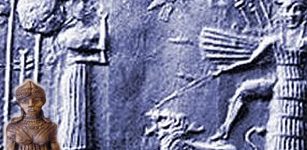 Ereshkigal – Ruler Of The Sumerian Underworld And Most Feared Deity In Mesopotamian Pantheon
Featured Stories | Mar 16, 2017
Ereshkigal – Ruler Of The Sumerian Underworld And Most Feared Deity In Mesopotamian Pantheon
Featured Stories | Mar 16, 2017 -
 Gigantic Asipatra: Terrifying Mythical Monster Bird In Hindu Beliefs
Featured Stories | Jun 14, 2017
Gigantic Asipatra: Terrifying Mythical Monster Bird In Hindu Beliefs
Featured Stories | Jun 14, 2017 -
 Mysterious Gobi Sea And A Huge Land Inhabited By The Real Sons Of God
Featured Stories | Aug 20, 2018
Mysterious Gobi Sea And A Huge Land Inhabited By The Real Sons Of God
Featured Stories | Aug 20, 2018 -
 Stone Age People Lived In Reused Houses – Not Just Caves – Discovery In Norway Reveals
Archaeology | Jan 26, 2018
Stone Age People Lived In Reused Houses – Not Just Caves – Discovery In Norway Reveals
Archaeology | Jan 26, 2018 -
 Mama Quilla – Incan Moon Goddess Of Marriage And Fertility Assisted By High Priestesses Of Qoricancha
Featured Stories | Jun 15, 2020
Mama Quilla – Incan Moon Goddess Of Marriage And Fertility Assisted By High Priestesses Of Qoricancha
Featured Stories | Jun 15, 2020 -
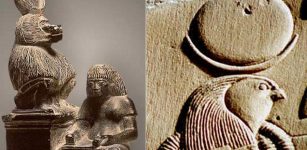 Full Moon In Ancient Myths And Legends Of Our Ancestors
Featured Stories | Nov 14, 2016
Full Moon In Ancient Myths And Legends Of Our Ancestors
Featured Stories | Nov 14, 2016 -
 Ancient DNA Yields Surprising Findings On World’s Earliest Seafarers
Archaeology | Jun 30, 2022
Ancient DNA Yields Surprising Findings On World’s Earliest Seafarers
Archaeology | Jun 30, 2022 -
 Location Of Burial Place Belonging To Alexander Nevsky’s Son And Grandson – Found
Archaeology | May 3, 2021
Location Of Burial Place Belonging To Alexander Nevsky’s Son And Grandson – Found
Archaeology | May 3, 2021 -
 Valhalla – The Hall Of The Fallen Where Viking Hero Warriors ‘Einherjar’ Dwell After Death
Featured Stories | Mar 11, 2018
Valhalla – The Hall Of The Fallen Where Viking Hero Warriors ‘Einherjar’ Dwell After Death
Featured Stories | Mar 11, 2018 -
 King David-Era Fort Unearthed In Golan Heights Sheds Light On Aramean Kingdom Of Geshur
Archaeology | Nov 14, 2020
King David-Era Fort Unearthed In Golan Heights Sheds Light On Aramean Kingdom Of Geshur
Archaeology | Nov 14, 2020 -
 The Navajo People In The Land Of The Four Sacred Mountains
Civilizations | Jun 10, 2020
The Navajo People In The Land Of The Four Sacred Mountains
Civilizations | Jun 10, 2020 -
 ‘Green’ Saudi Arabia Was Home To A 350,000-Year-Old Human Settlement
Archaeology | May 18, 2021
‘Green’ Saudi Arabia Was Home To A 350,000-Year-Old Human Settlement
Archaeology | May 18, 2021 -
 1,850-Year-Old Rare Bronze Coin, Depicting Roman Moon Goddess Luna – Unearthed
Archaeology | Aug 3, 2022
1,850-Year-Old Rare Bronze Coin, Depicting Roman Moon Goddess Luna – Unearthed
Archaeology | Aug 3, 2022 -
 6,500-Year-Old Pottery Belongs To Unknown Ancient Culture That Lived In Ecuador
Archaeology | Aug 7, 2019
6,500-Year-Old Pottery Belongs To Unknown Ancient Culture That Lived In Ecuador
Archaeology | Aug 7, 2019 -
 Previously Unknown Early Christian Church Unearthed In Ancient City Of Artaxata
Archaeology | Oct 18, 2024
Previously Unknown Early Christian Church Unearthed In Ancient City Of Artaxata
Archaeology | Oct 18, 2024 -
 On This Day In History: First Battle Of Gaza Was Fought – On March 26, 1917
News | Mar 26, 2017
On This Day In History: First Battle Of Gaza Was Fought – On March 26, 1917
News | Mar 26, 2017 -
 Unexplained Phenomena In Arkansas – Old Mysteries Still Puzzling The Modern World
Featured Stories | Jan 9, 2019
Unexplained Phenomena In Arkansas – Old Mysteries Still Puzzling The Modern World
Featured Stories | Jan 9, 2019 -
 DNA Study Of Ancient Humans Sheds Light On Human Evolution On The Tibetan Plateau
Archaeology | Mar 21, 2023
DNA Study Of Ancient Humans Sheds Light On Human Evolution On The Tibetan Plateau
Archaeology | Mar 21, 2023 -
 Ancient Germanic Ghost Warriors – Romans’ Greatest Military Defeat And Nightmare
Featured Stories | Feb 18, 2019
Ancient Germanic Ghost Warriors – Romans’ Greatest Military Defeat And Nightmare
Featured Stories | Feb 18, 2019 -
 Puzzling McClelland Sherd – Undeciphered Inscription Could Be Early Bronze Age Writing
Artifacts | Mar 27, 2018
Puzzling McClelland Sherd – Undeciphered Inscription Could Be Early Bronze Age Writing
Artifacts | Mar 27, 2018

